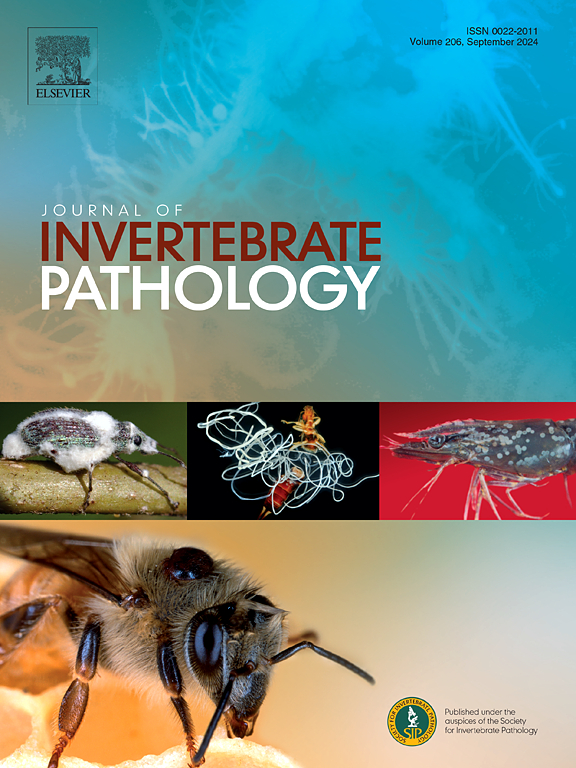The first 100 years in the history of entomopathogenic nematodes
IF 2.4
3区 生物学
Q1 ZOOLOGY
引用次数: 0
Abstract
The field of entomopathogenic nematology has grown exponentially since the discovery of the first species, Steinernema kraussei (=Aplecatna kraussei), in 1923. Initially, entomopathogenic nematodes (EPN) were solely viewed as a curiosity. The discovery of the nematode-bacteria association in 1965 and the incipient research for mass production motivated their recognition as biological control agents for agricultural pests. Subsequent studies were focused on the discovery of new species and/or populations, the early studies to understand the biotic and abiotic factors that contribute to their performance in the field and success in insect pest management. However, as we entered the 21st century, and with the advent of molecular biology, research on these organisms took a fascinating turn, unraveling a deeper understanding of the complex symbiotic relationship EPN has with their bacterial symbionts and the insect host. Furthermore, because of their experimental tractability, EPNs have proven to be model organisms that are used among various biological sciences to gain further insights into host-symbiont, host-pathogen interactions, population dynamics, and as resources for pharmaceutical bioprospecting. This special issue commemorates the first 100 years of research in entomopathogenic nematology and summarizes the contributions of ten symposia and presentations at the 100th Anniversary of the First EPN Discovery Congress in Logroño, Spain (https://www.icvv.es/english/epn). This specific article focuses on the historical review of EPN, their bacterial partners and the numerous and diverse applications in disciplines in basic such as phylogeny, biogeography, symbiosis, and soil biology and ecology, or more applied venues such as formulation and mass production, application technology, commercialization and regulation, from 1923 to the present time.

昆虫病原线虫史上的第一个100年。
自1923年发现第一个昆虫病原线虫种Steinernema kraussei (=Aplecatna kraussei)以来,昆虫病原线虫学领域呈指数级增长。最初,昆虫病原线虫(EPN)仅仅被视为一种好奇心。1965年线虫-细菌关系的发现和对大规模生产的初步研究促使人们认识到它们是农业害虫的生物防治剂。随后的研究集中在发现新物种和/或种群,早期研究了解生物和非生物因素,这些因素有助于它们在野外的表现和害虫管理的成功。然而,进入21世纪,随着分子生物学的出现,对这些生物的研究有了一个引人入胜的转折,对EPN与其细菌共生体和昆虫宿主的复杂共生关系有了更深入的了解。此外,由于它们的实验可追溯性,epn已被证明是各种生物科学中使用的模式生物,可以进一步了解宿主-共生体,宿主-病原体相互作用,种群动态,并作为药物生物勘探的资源。本期特刊纪念昆虫病原线虫学研究的第一个100 年,并总结了在西班牙Logroño (https://www.icvv.es/english/epn)举行的第一届EPN发现大会100周年的10个专题讨论会和演讲的贡献。本文重点回顾了EPN自1923年至今在系统发育学、生物地理学、共生学、土壤生物学与生态学等基础学科,以及在配方与批量生产、应用技术、商业化与调控等更多应用领域的众多不同应用情况,以及EPN的细菌伙伴。
本文章由计算机程序翻译,如有差异,请以英文原文为准。
求助全文
约1分钟内获得全文
求助全文
来源期刊
CiteScore
6.10
自引率
5.90%
发文量
94
审稿时长
1 months
期刊介绍:
The Journal of Invertebrate Pathology presents original research articles and notes on the induction and pathogenesis of diseases of invertebrates, including the suppression of diseases in beneficial species, and the use of diseases in controlling undesirable species. In addition, the journal publishes the results of physiological, morphological, genetic, immunological and ecological studies as related to the etiologic agents of diseases of invertebrates.
The Journal of Invertebrate Pathology is the adopted journal of the Society for Invertebrate Pathology, and is available to SIP members at a special reduced price.

 求助内容:
求助内容: 应助结果提醒方式:
应助结果提醒方式:


